Oh, how a garden may offer such a great variety… Not to speak of the variety of purposes a garden may serve. It may be distinguished from a park by its size, but rather more by its character: A garden is somewhat intimate and personal, offers shelter and lifts your spirit and is a place of intensified nature, no matter whether it focuses on yield or contemplation. Here are a few tips on where to find amazing garden worlds in the Rhine-Neckar Metropolitan Region:
Kurpark Bad Dürkheim
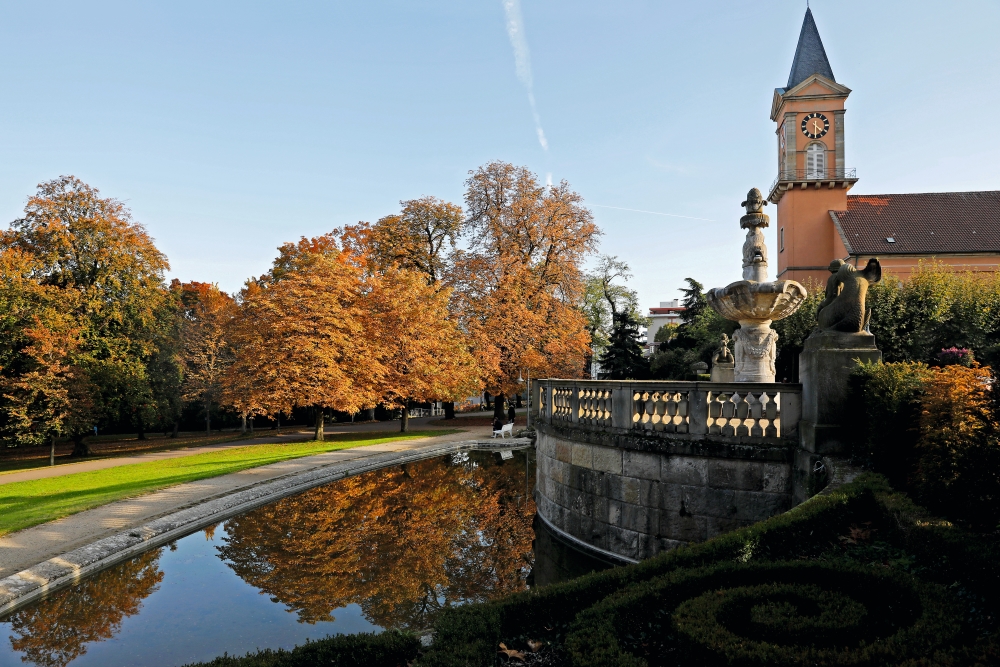
Strolling through these unusual, extensive gardens you can well recognize that they were meant to address the needs of people seeking recreation and how these needs changed over the centuries. Various styles influenced the appearance of the estate up until the 21st century—from the representative origins including the destruction of the residence of the counts of Leiningen in the 18th century to the redesign of the former palace park into an English garden in 1845, to the 333-metre-long graduation works built at about the same time, and to the elements introduced in the 21st century. The estate offers architectural and horticultural areas as well as natural and contemplative ones, areas designed for exercise and health promotion and special areas for children. The ever-growing gardens follow the renaturalised course of the Isenach brook. A trip to these gardens in Bad Dürkheim is a wonderful green journey through time.
Schlossplatz 1, 67098 Bad Dürkheim. The Kurpark is freely accessible. www.bad-duerkheim.de
Adenauerpark Speyer
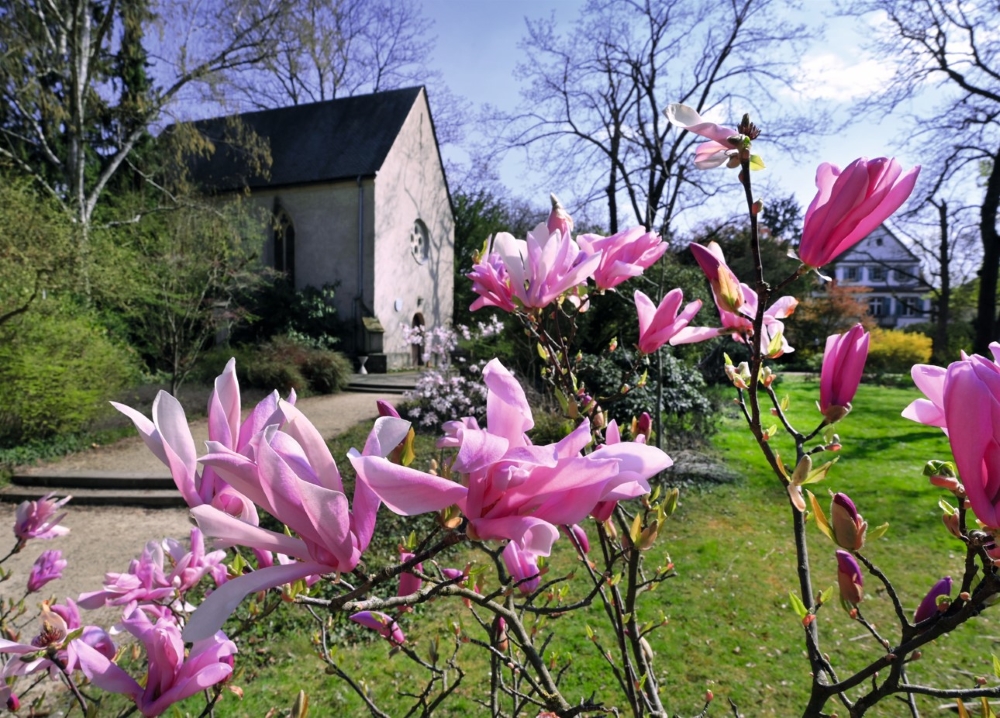
An enchanted idyll in the middle of the city, the small, intimate park with its old trees and rare woody plants overcomes the almost encircling ecclesiastical and secular symbolic burden and is, above all, one thing: a place of silence, gathering, listening. To the east, the garden is bordered by the mighty Saint Bernard church of peace and burial and the burial site of the cathedral chapter; to the west is the railway station. The park bears the name of a grand statesman and includes the grave of former German Chancellor Helmut Kohl as well as an austere Gothic chapel. Only since the 1950s has the former Speyer cemetery been open to the public as a park. Once you enter it leaving the gate behind you, the noise is left behind as well and a pond with water lilies shimmers in the greenery welcoming its visitors graciously.
Hirschgraben 4, 67346 Speyer. The Adenauerpark is freely accessible. www.speyer.de
Angelbachtal: Historical Eichtersheim Palace Park
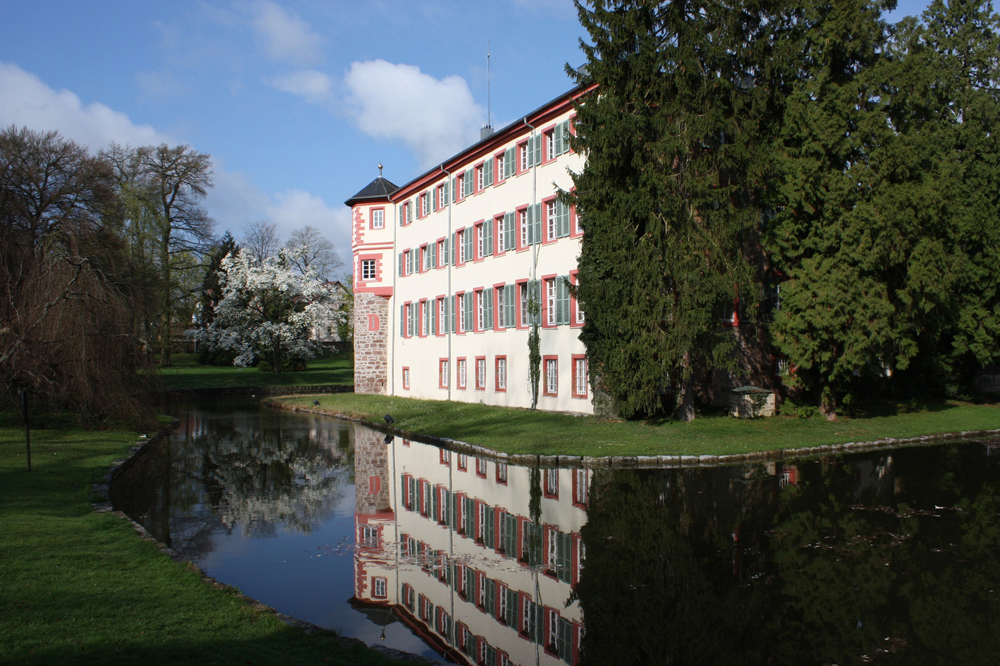
The Eichtersheim Palace Park was designed in the style of an English landscape garden in the middle of the 19th century and extends across 6.75 hectares. Its eye-catcher is the old moated castle from the 16th century. It is surrounded by moats from all sides to this day and has served as local town hall since 1980. Among the various old trees, there are several botanical specialities, such as a mighty ginkgo tree, a slit-leaved beech and a bizarrely shaped weeping beech with spreading branches. In the entrance area of the park there are numerous large sculptures made by the sculptor Jürgen Goertz. The Festival of Lights (on Whit Sunday), the Highland Games (on the second weekend in July) or the Medieval Market (on the second weekend in August) light up the park additionally.
Schlossstraße 1, 74918 Angelbachtal. The palace park is freely accessible outside of large events with entry at no extra cost. www.angelbachtal.de
Bensheim: Fürstenlager State Park
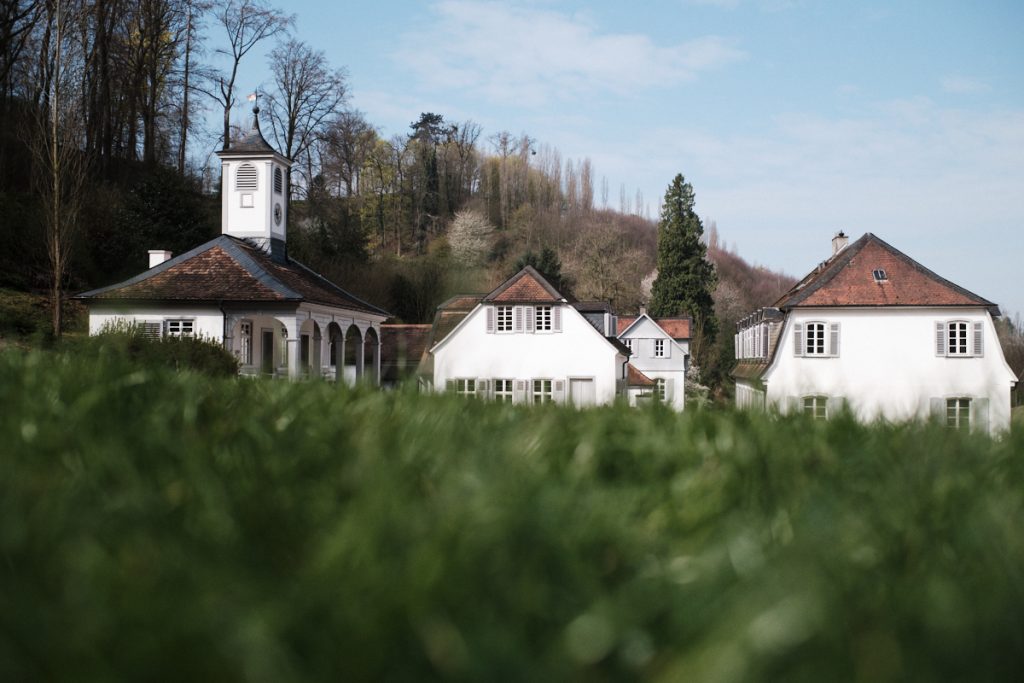
If you want to get to the Fürstenlager (prince’s camp), you need to ascend a marvellous chestnut-lined walk first. Until you reach a number of houses that may well look like an idyllic farmers village—but that are rather part of a passionate project of the nobility: The Fürstenlager was designed by Louis I, Grand Duke of Hesse and by Rhine, who had mainly one wish together with his wife Louise: to be outdoors and in a place of freedom beyond usual court conventions. And this is actually where you arrive—rewarded with a blaze of flowers in springtime. The path leads past the Goethe Brunnen fountain, to the manor house. Now, you have a view onto the large meadow that is crowned with the Freundschaftstempel (temple of friendship). This jewel located at Bergstraße road has been maintained by Stefan Jagenteufl (here you find our WO SONST portrait about the park manager), who has a number of occupations: he is a master in horticulture and landscape architecture as well as an inventor and manager of events, curator of monuments and archaeobotanist.
The Fürstenlager park is freely accessible with entry at no extra cost.
“Grüner Ring” (Green Circuit) in Ladenburg
Apart from its remediated historical old town, Ladenburg stands out by means of its network of green spaces and parks. The signposted “Grüner Ring” (green circuit) extends from the Benzpark across the fairground meadow and along Neckar river; it passes the outdoor swimming pool and a marvellous brook landscape and leads to the inviting Reinhold-Schulz-Waldpark; it runs along the old town to the Martinstor gate and the Hexenturm tower and finally reaches the starting point reaching full circle—the green circuit. If you feel like, drop in at the car museum that Winfried A. Seidel set up in the former Carl Benz factory building.
The Grüner Ring circuit is freely accessible with entry at no extra cost.
Landau: Kreuzgarten (Cloister Garden)
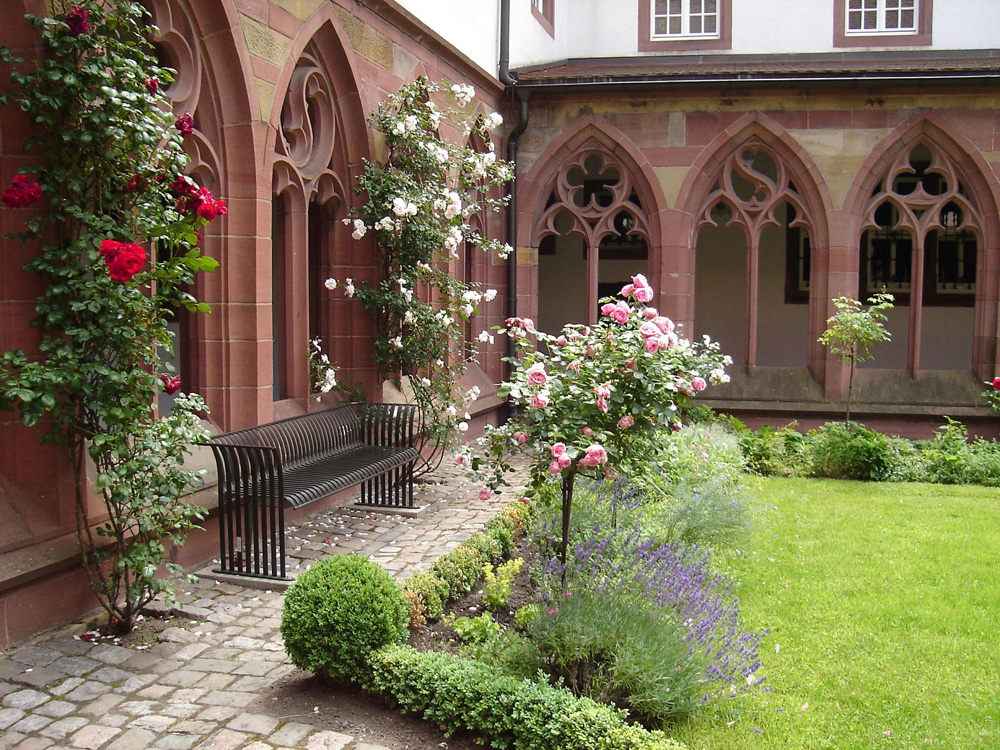
This contemplative complex, enclosed by a cloister and stretching across some 600 square metres, is an oasis of tranquillity in the heart of Landau’s bustling city. A wayside cross partitions the lawn that is, again, enclosed with box hedges, high-trunk rose species and perennials. Climbing and dog roses ramble high up the pointed arches that date back to the late Gothic period. The adjacent Heilig-Kreuz-Kirche church of the former monastery of the Augustinian eremitical monks was built between 1405 and 1413 (read our WO SONST story about the history of the town of Landau here). In 2003, the garden was newly laid-out according to historical examples. In its centre, a former baptismal font dating from about 1700 now serves as a quietly burbling fountain. Many of the rose bushes were contributed on the occasion of marriage ceremonies.
Königstraße 21, 76829 Landau. The Kreuzgarten site is accessible from 8 a.m. to 6 p.m.;
Lorsch: The Lorsch Pharmacopoeia and the Herb Garden

The beginnings of scientific medicine in the Occident are rooted in the Rhine-Neckar Metropolitan Region: The Lorsch pharmacopoeia comprises about 180 medical plants, all of which may be found here on the premises of the monastery, and was included in the UNESCO World Cultural Heritage in 2013. The garden is situated at Spittelsberg/Spitalberg mountain, which is part of the Lorsch Abbey, and it is protected towards the north by a colossal tithe barn. The various patches of the garden ascend up a gently increasing dune. On warm summer evenings the air wafts warmly and aromatically between the hill and the masonry. A Walk from here to Lauresham, where archaeology literally becomes alive, is rewarding.
Lorsch Abbey UNESCO World Heritage Site, Nibelungenstraße 31, 64653 Lorsch. The herb garden is freely accessible with entry at no extra cost.
Lorsch: Peony Garden—Education and Demonstration
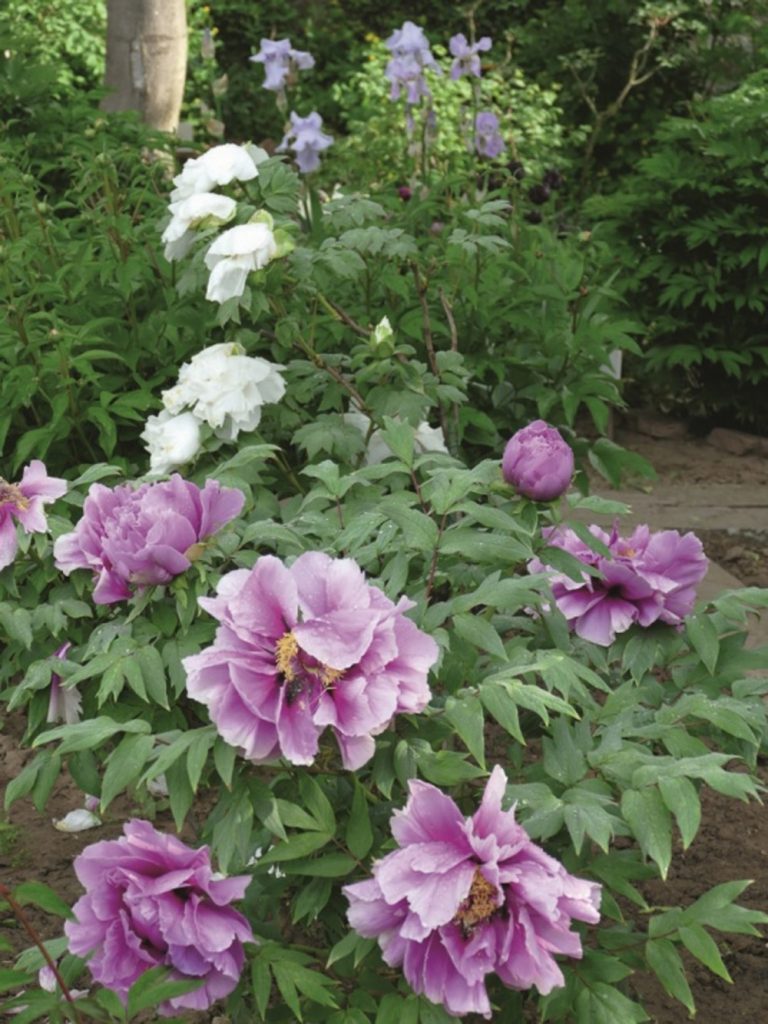
How marvellous! Termed “the queen of herbs” by Homer, the peony is admired mainly for its beauty nowadays. The educational and demonstrative garden within the picturesque garden of the Protestant church in Lorsch currently comprises some 170 magnificent types and species, either wild or cultivated, from various continents and centuries. Carried across the Alps to Germany by Benedictines, the peony played an important part in Early Medieval medicine and is admired in China as “imperial flower” even today.
Nibelungenstraße 25, 64653 Lorsch. The Pfingstrosengarten (peony garden) is freely accessible with entry at no extra cost.
Ludwigshafen: Ebertpark
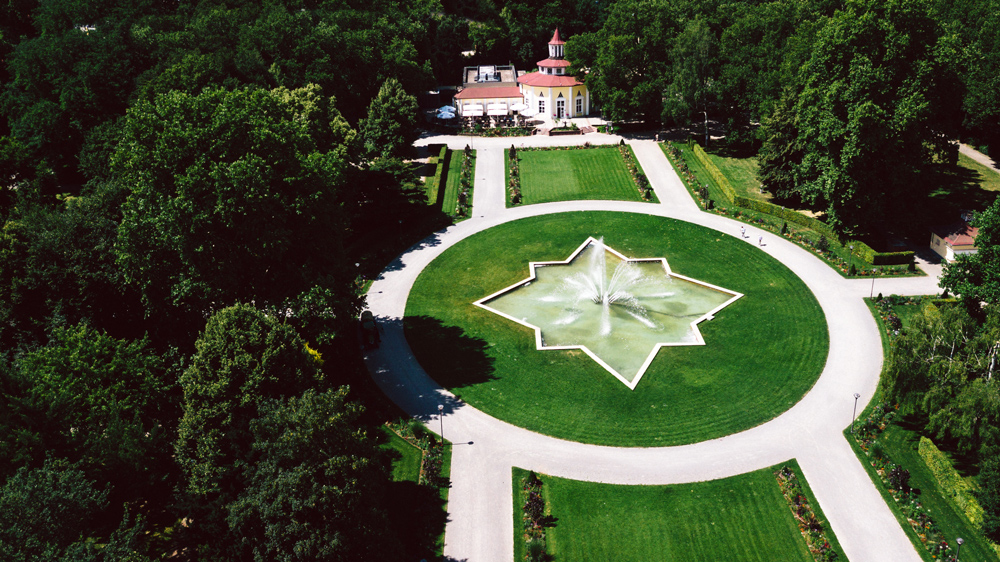
Opened in 1925 on the occasion of the Süddeutsche Gartenbauausstellung, a horticultural exhibition in South Germany, the Ebertpark was built on a marshy ground that once used to be part of the original course of the Rhine and that was hardly used. This “green lung” gradually increased from an initial 8 to currently 23 hectares and has thus become one of the most important recreational areas within this city of chemistry over the past 50 years. Despite of their ampleness, the grounds offer a number of carefully designed and cosy safe havens, such as the herb and reading garden. The alternating flowerbeds in the geometrically designed entrance area are like a feast for the eyes. Here you find our WO SONST story about the Ebertpark.
Erzbergerstraße / intersection Ebertstraße, 67063 Ludwigshafen. The Ebertpark is freely accessible with entry at no extra cost.
Mannheim: The Chinese Garden in the Luisenpark
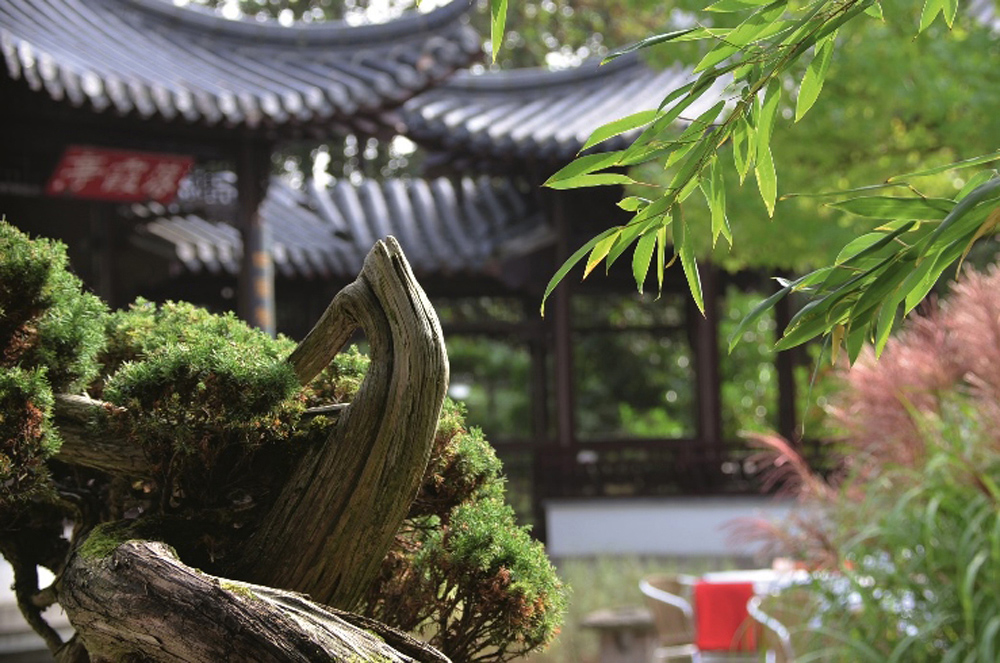
The Chinese Garden in the Luisenpark opens a gate to a world of enchantment to visitors. With this garden featuring the largest Chinese tea-house in Europe, which was built true to originals, landscape architect Li Zheng has focused particularly on the harmony of the seven things: earth, sky, stones, water, buildings, paths, plants—which ought to be in harmony with each other. Here, everything is in a state of flux: silence and energy, gravity and effortlessness. Laid-out in a South Chinese design and with typical materials, the garden is designed according to the principles of Feng Shui—the “wind and water” theory. What more is there to discover? Read it in our WO SONST story “Real and Tangible” about the Luisenpark.
Opening hours: from September to April from 9 a.m. to twilight, from Mai to August from 9 a.m. to 9 p.m.;
Schwetzingen: Palace Gardens
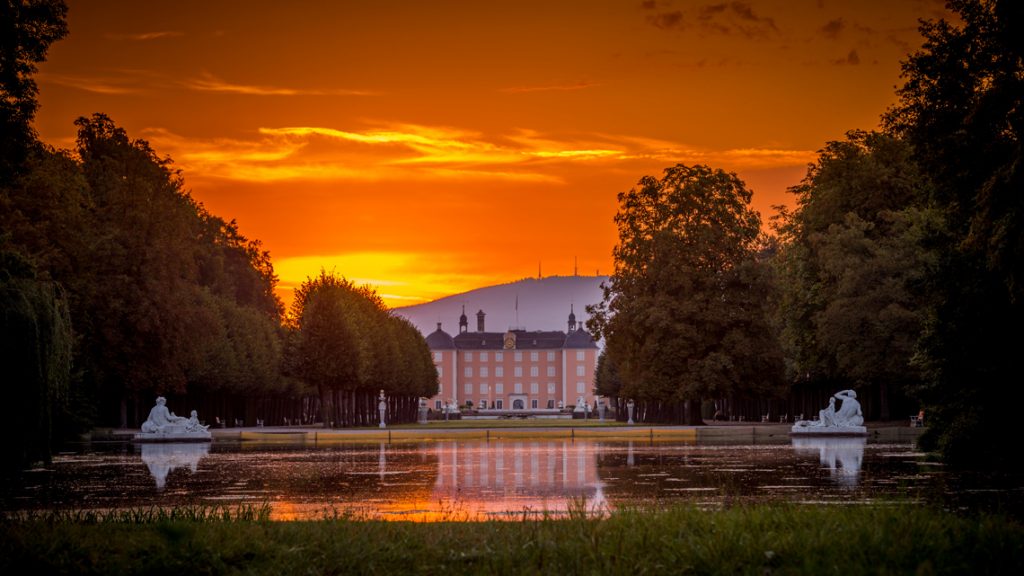
This summer residence offers a marvellous garden. Prince-Elector Charles Theodore had it extended according to plans by Nicolas de Pigage and Friedrich Ludwig von Sckell in the second half of the 18th century and it became a masterpiece of landscape gardening. The cour d’honneur and the palace buildings form the entrance area to the palace gardens, which open up along the central baroque axis on a 72-hectare surface. The French, perfectly circular parterre is followed by rococo galleries and patches designed like an English landscape garden featuring numerous sculptures and buildings, like for example a garden mosque. Here you find the respective WO SONST tour.
Opening hours: from the end of October to the end of March: Monday to Sunday from 9 a.m. to 5 p.m., and from the end of March to the end of October: Monday to Sunday from 9 a.m. to 8 p.m.; enter at the latest at 4.30 p.m. / 7.30 p.m. respectively; admission: €5 and €7 respectively / reduced price: €2.50 and €3.50 respectively;
Weinheim: Exotenwald (Exotic Forest)
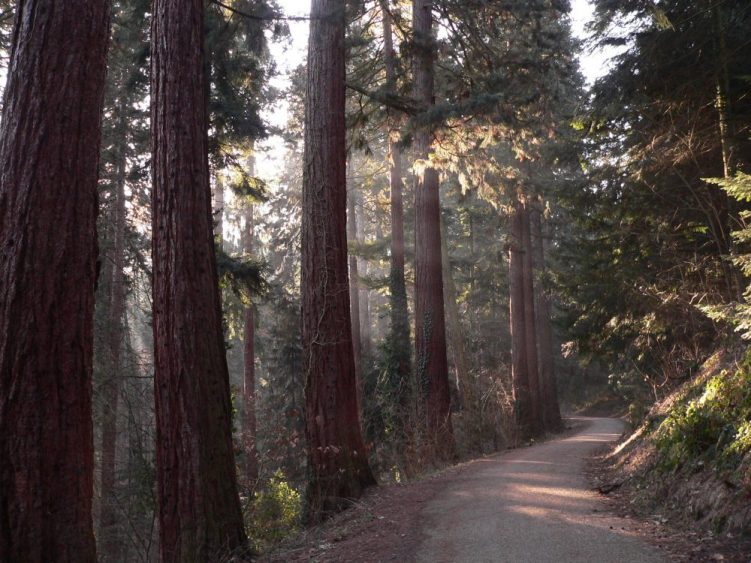
The Exotenwald (Exotic Forest) is a recreational forest area adjacent to the palace park with signposted paths (Here you can learn more about the “miraculous trees”). The different forest patches are assigned to 18 different forest regions in the world, whose trees are thriving even in Weinheim. The 60-hectare Exotic Forest offers trees from all of these 18 regions. The tallest giant redwoods tower up as many as 55 metres and are some 150 years old.
The park is freely accessible with entry at no extra cost.
Weinheim: The Schau- und Sichtungsgarten Hermannshof institution
The Schau- und Sichtungsgarten (garden for demonstration and observation purposes) Hermannshof in Weinheim is an educational and research institution for perennials regarding ecological and aesthetic criteria. The park with the classical manor house comprises over 2,500 species of perennials and woods rarely seen in Germany. A visit is rewarding for both gardening enthusiasts and specialists in search of fresh impetus for new and appealing garden designs. The Freudenberg company and the town of Weinheim run this garden and we made a WO SONST portrait about its garden expert in charge.
Accessible: in March and October every day from 10 a.m. to 6 p.m., from April to September every day from 10 a.m. to 7 p.m., in the winter period from Monday to Friday from 10 a.m. to 4 p.m. (except on public holidays); closed from December 24 to January 6; admission free;
www.sichtungsgarten-hermannshof.de
Worms: Herrnsheim Palace Gardens
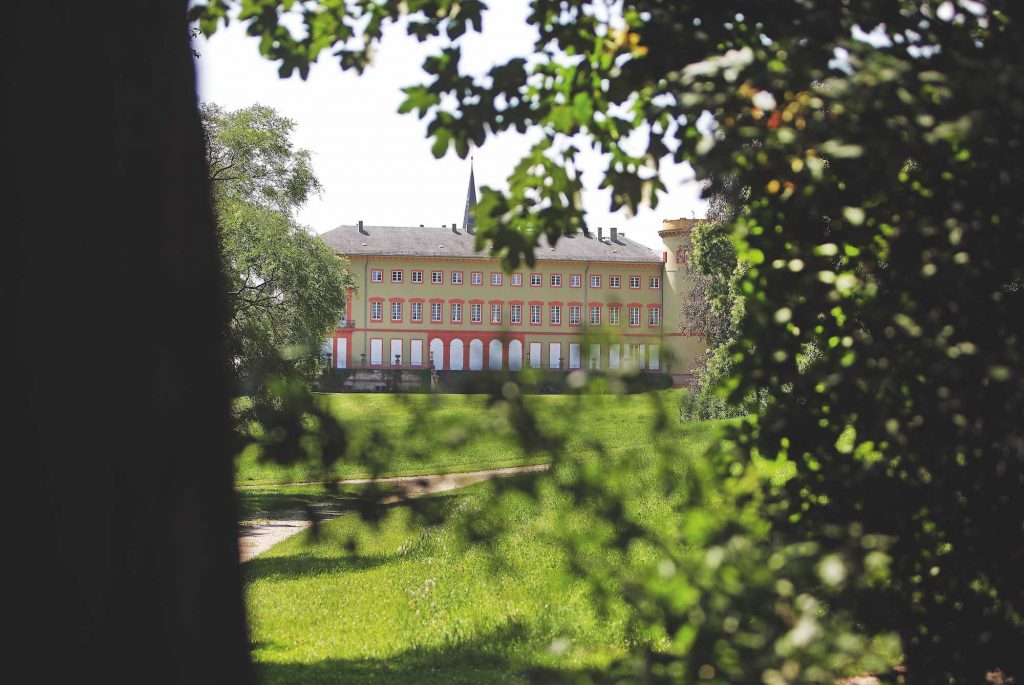
The 10.5-hectare landscape garden was commissioned by the palace owner Wolfgang Heribert von Dalberg and turned into reality by the famous landscape architect Friedrich Ludwig von Sckell sometime between 1788 and ‘92 and his trainee Johann Michael Zeyher around 1811 as an English landscape garden. The extensive pond landscape and its bridges, islands, channels and Amorgrotte grotto as well as the spacious meadow areas and the forest-like stock of trees in the north of the garden grounds are essential elements of the design. The ingenious arrangement of the paths network creates constantly new views for the visitor: back-drops, look-through perspectives and sight axes like the ones towards St. Anna-Kapelle chapel, the tea-house, Schillerturm tower or the Orangery. Native park trees like the common oak or the copper beech have their home in the palace garden just as much as nettle trees from North America or a plumeria from China. Why this palace in Worms is still waiting for the wake-up kiss…find out in our WO SONST story.
Herrnsheimer Hauptstraße 1, 67550 Worms. The park is freely accessible with entry at no extra cost.
Worms: Heylshofpark
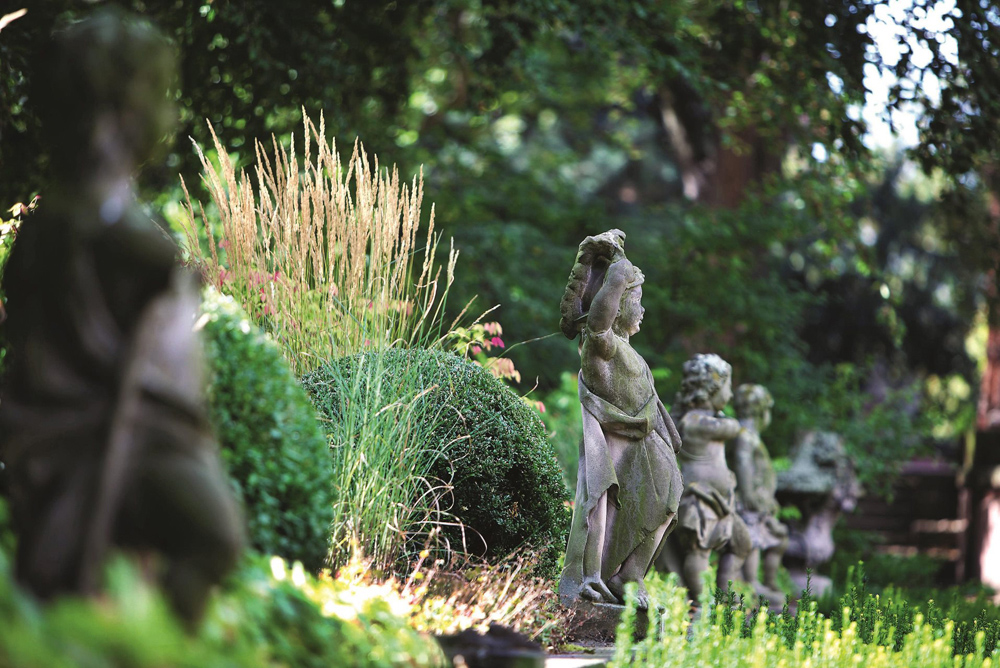
On the same spot where the Bischofshof was destroyed in 1689 and situated adjacent to the Cathedral, leather industrialist Cornelius Wilhelm von Heyl from Worms had a park laid-out and a baroque-style residential palace erected in 1884, which is today the Heylshof Museum. The park is an oasis of tranquillity in the heart of the town. On the old city wall, there is the Herkulesbrunnen fountain made in Romantic-style grotto architecture of tufa limestone. A memorial with bronze objects and an educational and activity course in place between May and October remind of Luther at the Diet of Worms of 1521. From here, it’s not far to the town’s famous Jewish cemetery with its impressive history.
Stephansgasse 9, 67547 Worms. The park is freely accessible from 9 a.m. to twilight with entry at no extra cost.
The texts are based on the “Gartenpforte” brochure and are available as PDF file as well. Final editing: Dr. Barbara Gilsdorf, town of Schwetzingen.